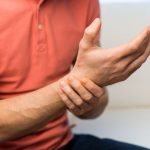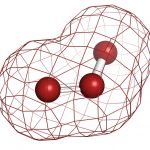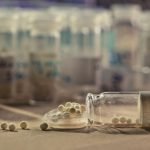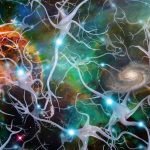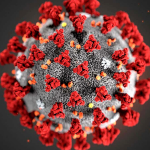Notes from the Field #33
June 2022
JARED L. ZEFF, ND, VNMI, LAC
The following is not an article prepared for a medical journal. Not every statement of fact is cited or referenced. This is a commentary on the medicine, a running set of observations about practice in the field. It’s not meant to be a peer-reviewed presentation; rather, these are notes and thoughts from a practicing naturopathic physician, a primary care doc in general practice.
Conferences
I really like naturopathic continuing education conferences. When I was vice president of the Oregon Association of Naturopathic Physicians (OANP) around 1982, I was responsible for providing continuing education (CE). I organized the conferences from start to finish, found venues, signed contracts with them, engaged speakers, and signed and distributed the CE certificates. It was quite an education in how conferences work and the kind of costs involved. I particularly liked to find old naturopathic physicians who would present to us younger docs. For me, the gold standard of evidence in the profession has always been the experience of our older doctors. They know what works and what doesn’t. And it was through such a conference that I met my mentor, Harold Dick, of Spokane.
In those days, there was a single national convention: the Northwest Naturopathic Physicians Convention (NWNPC). This convention provided all the CE hours that any of the 6 states that licensed us then would require. It was run by the Northwest Naturopathic Physicians Association, which was composed of the 5 licensed jurisdictions of the Pacific Northwest: Oregon, Washington, British Columbia, Alberta, and Idaho. We would gather somewhere in the Northwest and spend a couple of days learning from each other. Each year, the conference would be run by a different state or provincial association, depending on whose turn it was. It was not just the formal education that drew me, though. It was the chance to meet with colleagues, especially the older doctors, and engage in informal learning with them. Gerry Farnsworth, DC, ND, from British Columbia, would always reserve a suite with a full bar at the hotel and host these informal meetings in the evening.
The NWNPC was created to raise money for “the school.” At that time, there was just National College of Naturopathic Medicine (NCNM, now NUNM). It was founded in 1956 to prevent the demise of the profession after the last of the original schools closed. We had as many as 20 4-year naturopathic medical colleges since Benedict Lust opened the first college in New York at the turn of the previous century. But the last of these schools accepted its last naturopathic student in 1953. Once NCNM was established, the profession had another chance to survive and grow. The conference was established to provide funding for the new school, which it did for over 25 years until Bastyr College (now Bastyr University) was established. Shortly after that, the profits generated from the conference were kept by the hosting association, which would pass on some of the proceeds as seed money to develop the following year’s conference.
In 1984, Jim Sensenig catalyzed the founding of the American Association of Naturopathic Physicians (AANP). Initially, the AANP set about creating a new CE conference: the annual AANP convention. For a while we had both the AANP conference and the NWNPC. Since conferences are a potential source of revenue, more and more state associations – as well as our schools – decided to have their own conferences to generate money. And as we developed specialty societies, each of these developed CE conferences. Now we have many options each year, as well as countless CE opportunities online. COVID-19 changed all this with its lockdowns, and all conferences became virtual, if not cancelled outright. But last year, we began to meet in person again, and this year, more and more conferences are opening back up.
I had an unusual opportunity this May of attending the Wisconsin Naturopathic Doctors Association (WNDA) annual conference. They just got a licensing bill through and are now working on the administrative rules with which the statute will be put into practice. The Wisconsin doctors were celebrating and put together a conference to review primary care practice, since they are about to move into a primary care status. All naturopathic physicians are trained as primary care providers – general practice primary care doctors. Being in a pre-licensed state, however, presents challenges to this training. Often in such states, doctors are prohibited from touching a patient, and if a doctor has been practicing in a pre-licensed state for a while, such skills may be a bit rusty. Consequently, a main emphasis of this conference was physical examination skills.
To present this refresher, they had asked Richard Barrett, ND, from NUNM, to teach a section on the physical examination, including a practicum. I had never taken a course from Dr Barrett, though I had hired him to teach EENT at what was then NCNM when I was dean there. As dean, I had sat in on his class a few times, but that was over 30 years ago. Dr Barrett has an amazing knowledge base and did an excellent job in presenting it to us. He has been teaching in our schools for around 35 years, and following in the footsteps of his father, he was possibly the first of us naturopathic doctors to develop an exclusively academic career. Dr. Barrett’s knowledge of the subject was deep and broad. I found his 2-hour class humbling because his knowledge of the intricacies of physical examination far exceeded my own. If you ever have the opportunity to learn from Dr Barrett, I most highly recommend that you take it. He has significant advanced training, has received several awards for his teaching, and is published in the field.
The Importance of the Physical Examination
Dr Barrett taught elements of the physical examination. A remarkable thing I experience in my practice is the reaction of my patients to the fact that I do “old-fashioned” physical examinations as a mainstay of my diagnostic work. I have found over the years that I need to do a rather detailed physical to understand what is going on with my patients. I do not rely upon laboratory findings nearly as much as physical or clinical findings in assessing my patients’ health status. I take the patient’s history and physical examinations very seriously. My patients often comment that either they have never had such a thorough exam, that they have never even been touched by a doctor, or that they have not had a physical exam from a doctor for many years. I think that it helps to build patient confidence by doing this, but that is not why I do it. I simply learn a lot about my patient through these examinations.
In school, we learned what I call a “Bates physical.” Dr Barbara Bates published her Guide to Physical Examination and History Taking in the early 1970s, and I had it as a textbook in school. The Bates Guide is a standard in medical schools, now in its 13th edition, and regularly updated. Since learning that original Bates physical, my physical exams have changed over the years. To that basic examination, I have added pulse diagnosis, tongue diagnosis, iridiagnosis, reflex point analysis, acoustic cardiography, and other naturopathic or functional examinations. I also have an electrocardiograph and other, more sophisticated equipment that I have accumulated over the years. We do in-house labs and send people to other clinical labs as needed.
Several times over the past several years, I have detected an unusual lump in a patient’s abdomen by physical exam. In these cases, I will refer out for a diagnostic ultrasound, and then a CT scan or MRI if indicated. A few of these proved to be ovarian cancers; a third was an adrenal cancer. All of these were surgically removed early enough that cure was attained. That was simply from physical examination.
The Wisconsin conference was rather small. In contrast, conferences hosted by the likes of the AANP, the OANP, and the Naturopathic Medicine Institute have hundreds of participants. I think there were 25 at the WNDA conference, and another 15 or so participated online. There were 6 or 8 exhibitor booths. This little conference was fun, held at a huge wilderness resort in the wilds of Wisconsin. The small size meant that it was quite intimate, and I met several young docs and had some great conversations.
I was invited to come there to deliver a couple of talks for the conference. My first talk was about the difference between naturopathic primary care and conventional primary care, with some discussion of standards of care. My second talk was about an approach I have developed to rapidly prescribing homeopathic medicines, which I have addressed in this column.1,2 The discussion of standards of care and primary care is a discussion that goes to the heart of a significant point of division in our little profession. And that discussion really addresses the question of who we are, and what naturopathic medicine is.
Primary Care Medicine and Standards of Care
I began thinking about this topic when I had a student come into my office to precept a while ago. She was questioning my willingness to treat a pneumonia patient. First, she was incredulous that I would treat such a serious illness as a naturopathic physician. Then she was concerned as to whether I could treat such a patient, as she had been taught in school that these cases needed to be referred to MDs. She asked whether I was in some sense violating the standard of care. Let me dissect this a bit.
First, what is a primary care physician? We can take a partial definition excerpted from the American Academy of Family Practice: “A primary care physician…provides definitive care to the undifferentiated patient at the point of first contact, and takes continuing responsibility for providing the patient’s comprehensive care.”3
So, at its most basic, a primary care physician sees the undiagnosed patient, usually at the point of first contact with a physician. It is that physician’s responsibility to diagnose this patient and then to treat or refer. Naturopathic physicians have always been trained as primary care physicians. Primary care does not mean providing a specific kind of care, such as antibiotics or vaccines. It means to provide the medicine of first contact (hence, primary care), to diagnose and treat that patient, and to do so within the scope of one’s practice. This is what I do and have done for over 42 years now. This is what we have always done as naturopathic physicians, and this is what we are trained and licensed to do. Remember, we are a separate and distinct branch of the healing arts.
A second consideration is that of standards of care. Several preceptors I have worked with lately assume that there is a uniform standard of care and that this standard is the same for all physicians, for MDs as well as for us, and that it is imposed upon us by some outside authority. A simple examination of this proposition will demonstrate that it is incorrect. If a patient presents with a bladder infection, I will treat that patient most likely with a homeopathic medicine and/or a botanical medicine. Though I am licensed to prescribe antibiotics, it would be very unlikely that I would do that. But if I were a medical doctor, I would be expected to use an antibiotic, and if I use homeopathy or botanical medicine, my MD license could be challenged. In my talk to the WNDA, I presented 4 cases: Crohn’s disease, immune thrombocytopenia, interstitial cystitis, and an autoimmune disease. All were complex cases. All were successfully treated with traditional naturopathic therapeutics. All I did was within the general scope, training, and standard of care of naturopathic physicians. Nothing I did was within the scope, training, nor standard of care of conventional medicine. I am not subject to a conventional standard of care, and in most states or provinces, I could not apply it anyway, because it would be beyond the scope of my license. We have our own standard of care, and as naturopathic doctors, we determine what that is.
The AANP, under the presidency of Thom Kruzel, ND, published the first naturopathic standard of care, which has been twice revised. It basically says that we should provide care that is logical and timely, within our scope and training, reevaluate as needed, change treatment if indicated, or refer if needed. In other words, do good and timely work in the best interest of our patient. Method or modality is irrelevant, for the most part. Do what works.
I love our little profession. I love seeing people heal. I am proud and humbled by what we have accomplished in the past 50 years of regenerating naturopathic medicine. I take great pleasure in practicing as a primary care naturopathic generalist, in the vitalist tradition.
Respectfully,
Jared Zeff, ND, VNMI, LAc
References
- Zeff J. Notes from the field: August, 2019. Naturopathic Doctor News and Review. https://ndnr.com/cardiopulmonary-medicine/notes-from-the-field-august-2019/. Published November 12, 2019. Accessed June 12, 2022.
- Zeff J. Notes from the field: November, 2020. Naturopathic Doctor News and Review. https://ndnr.com/clinical-pearls/notes-from-the-field-november-2020/. Published April 7, 2021. Accessed June 12, 2022.
- Primary care. AAFP Home. https://www.aafp.org/about/policies/all/primary-care.html#Primary%20Care. Published December 12, 2019. Accessed June 12, 2022.

Jared L. Zeff, ND, VNMI, LAc, is a licensed doctor of naturopathic medicine and a licensed acupuncturist. In addition to functioning as Medical Director at the Salmon Creek Naturopathic Clinic in Vancouver, WA, Dr Zeff teaches on the faculty at National University of Natural Medicine in Portland, OR, where he was also Dean from 1988 to 1993, and holds a professorship in Naturopathic Medicine. Dr Zeff is a graduate of the University of California, NCNM, and the Emperor’s College of Traditional Oriental Medicine. He, along with Pamela Snider, is the author of the AANP’s Definition of Naturopathic Medicine, and the Therapeutic Order concept.




